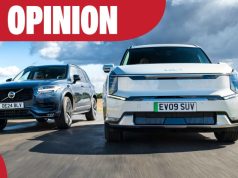The Path To Paying for Your New Car Needs To Be Chosen Wisely
This article may contain affiliate links.
Buying a car is a big move not only in terms of the price but also on the way you finance it. Regardless of whether it is paid upfront or is paid over time through financing, both paths have their pros and cons. Having information about each option can assist you in deciding which one is the best choice in your situation.
The Immediate Impact of Paying in Full
Using cash to buy a car brings instant ownership and eliminates the stress of monthly payments. There’s no lender involvement, no interest charges, and no risk of repossession. Buyers who take this approach often enjoy a simpler transaction process since fewer checks and formalities are required.
Spending such a large amount of money may strain your savings. It may leave you with less money to spend on other priorities or emergencies. Although you are not charged financing fees, you lose the chance of earning interest on the money that could have been invested elsewhere. This financial pressure can be overwhelming for people with a tight budget.
Financing and Its Benefits
Car finance is an option that will break down the cost into smaller, easily manageable monthly payments. This approach makes cars affordable to individuals who may not be in a position to afford the full purchase cost out right. Most lenders also offer flexible terms, where the borrower has the opportunity to select repayment periods that are in line with their income levels.
Some dealerships run promotions that include low interest rates or added incentives, making financing an attractive proposition. For individuals rebuilding their credit histories, certain agreements — such as car finance for bad credit — can provide a way to access reliable transportation while simultaneously improving credit scores through consistent, on-time payments.
Considering the Long-Term Costs
While financing helps with affordability, it increases the total amount paid. Interest accumulates over time, meaning the final price of the vehicle can be substantially higher than the initial sticker price. Longer repayment periods tend to amplify this effect.
In contrast, cash purchases avoid these additional charges. Yet, tying up a large amount of money in a depreciating asset could limit future financial flexibility. Vehicles lose value quickly, and using savings for a rapidly depreciating item may not always be the most strategic move.
Ownership and Security
Full payment immediately establishes clear ownership. The car is entirely yours, which simplifies things if you ever decide to sell or trade it in. No liens or outstanding balances exist, and you won’t need to negotiate with lenders when transferring ownership.
Financed vehicles, however, formally belong to the lender until they are paid off. This may make sales or upgrades difficult. Also, defaulting on payments may result in foreclosure, where you lose the car and the money that you have already paid in installments.
Flexibility and Opportunity
By opting to finance, you can hold cash in reserve, which could enable you to take up other projects, like investments, home repairs or school fees. This flexibility may be useful when those alternative uses of money yield greater returns than the repayments that need to be paid on the car loan.
However, this benefit hinges on discipline. Without careful planning, available funds may get spent on less productive things, leaving you with both a loan and depleted savings.
Evaluating Your Situation
The correct course of action is determined by personal priorities. When you are more concerned about avoiding debt and you have sufficient savings, full payment can be a relief. On the other hand, when liquidity is critical or you are interested in credit-building, then financing might be the more intelligent option.
Take into account aspects like job security, the size of your emergency fund and future financial plans. Calculate the overall cost in the long run, not just the monthly cost, to prevent unexpected expenses in the future.
Striking the Right Balance
Some buyers compromise by paying a large down payment and financing the balance. This method lowers the total amount of interest and leaves a bit of cash to use on other requirements. It also reduces monthly commitments, establishing a more reasonable balance between short-term expenditure and long-term expenditure.
The decision between cash and finance is a matter of priorities and resources. Lump sum payments provide simplicity and ownership clarity, but require a large amount of initial capital. Financing offers access and flexibility, but at an increased cost, and with potential risks.
Balancing the two is the best way to make sure that the choice you make will fit your financial objectives and lifestyle. By looking beyond the initial excitement of a new car, you can secure a deal that serves you well for years to come.
The post Should You Buy a Car With Cash or Finance? first appeared on Clean Fleet Report.







